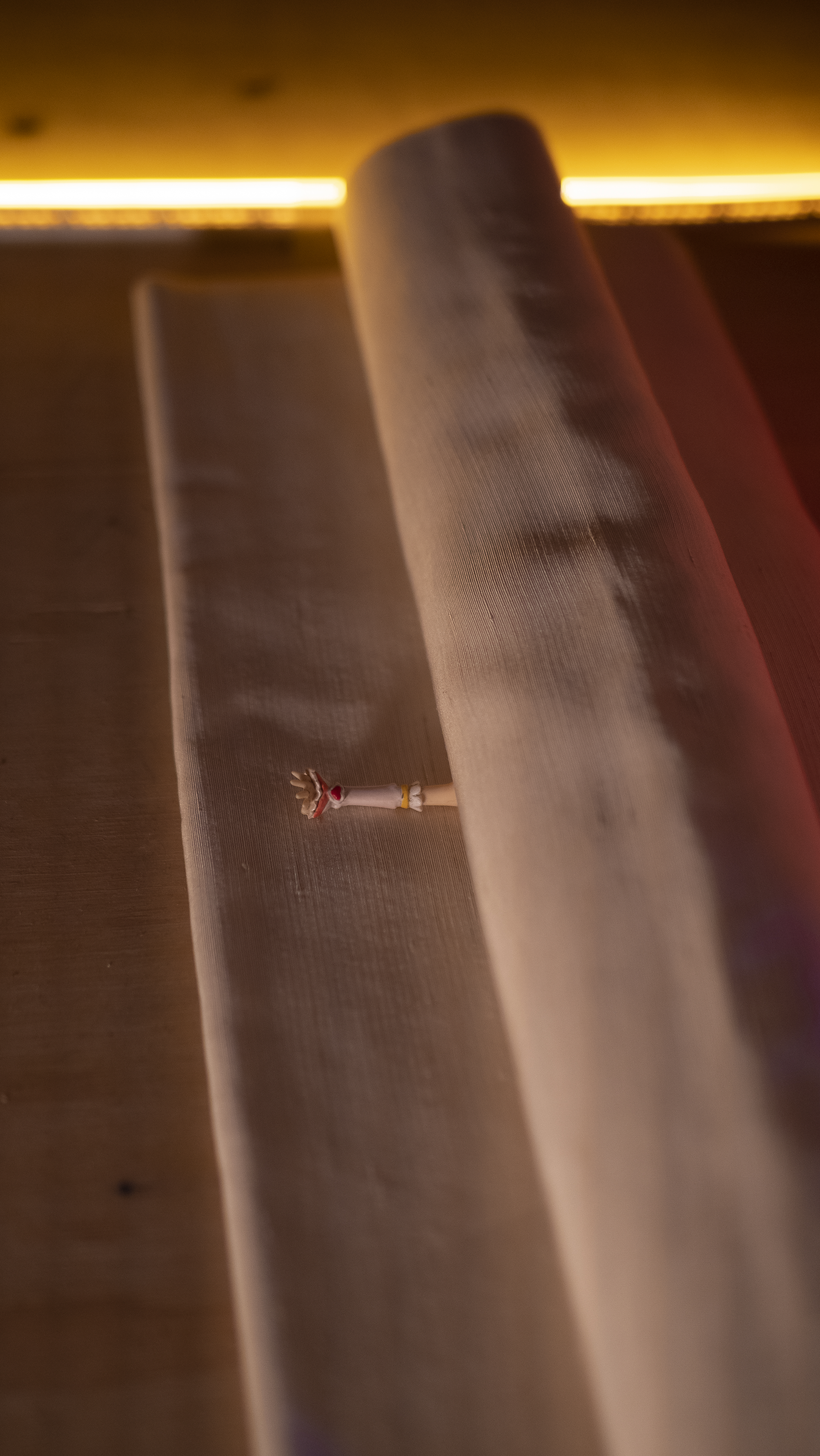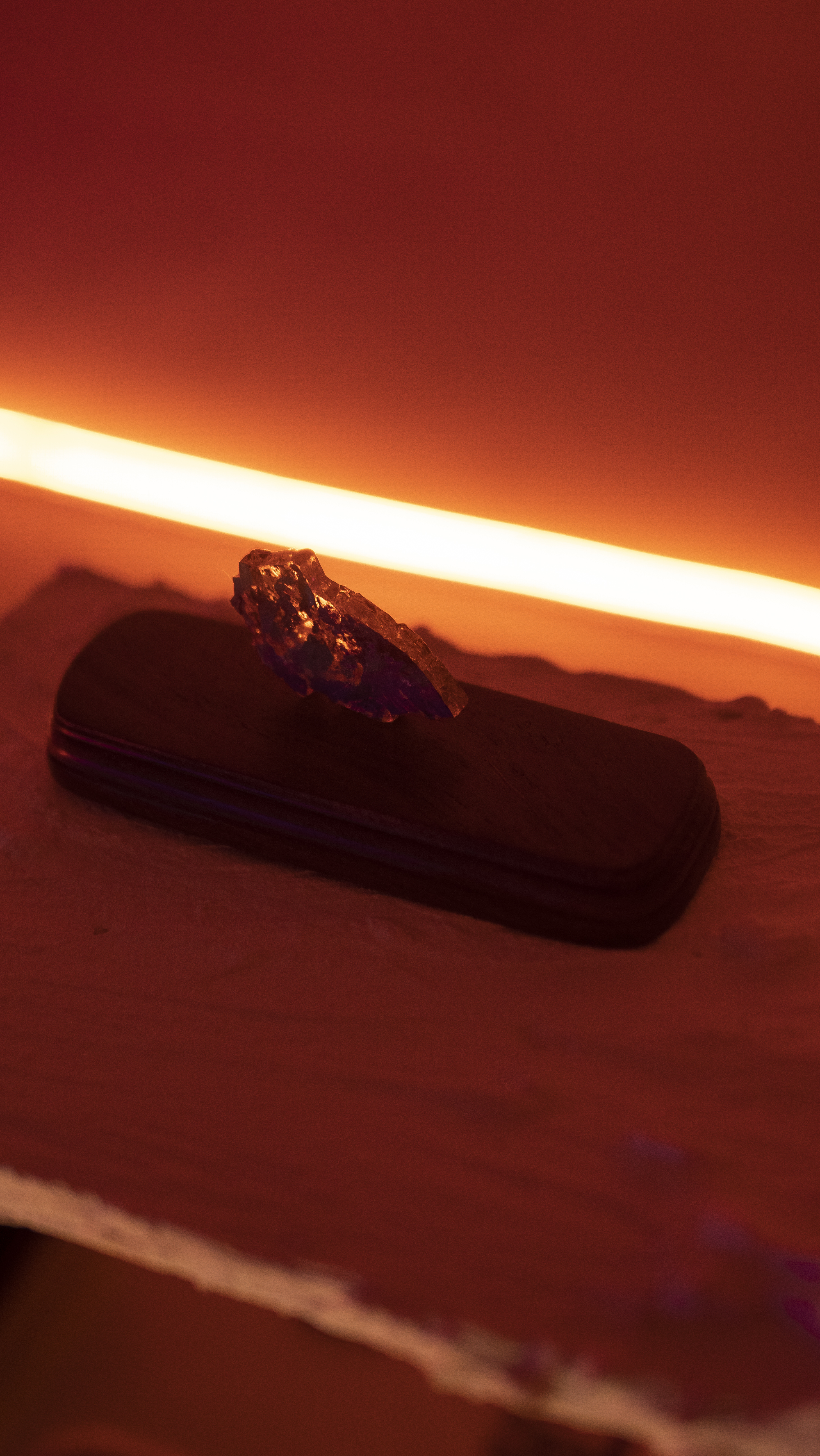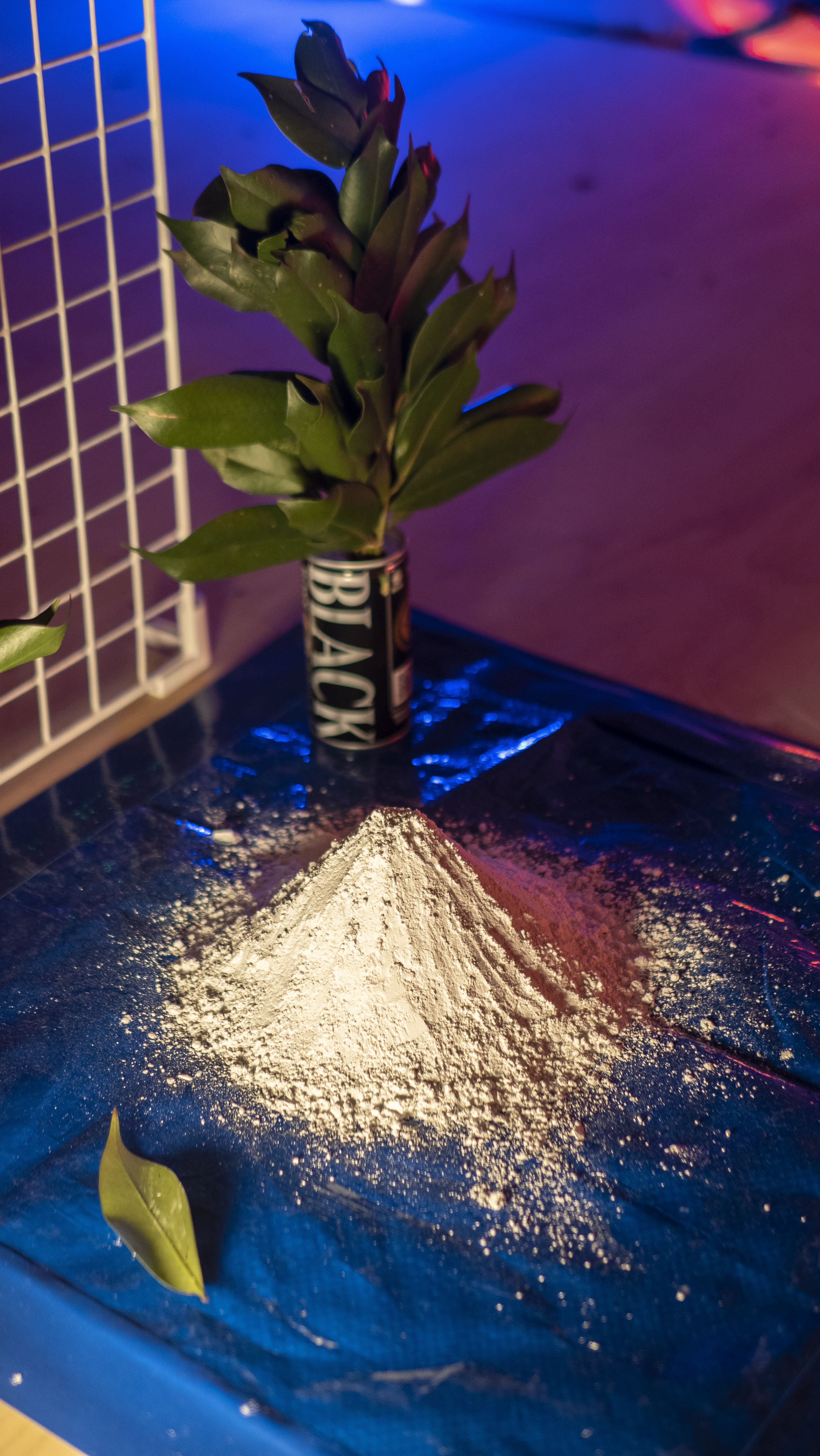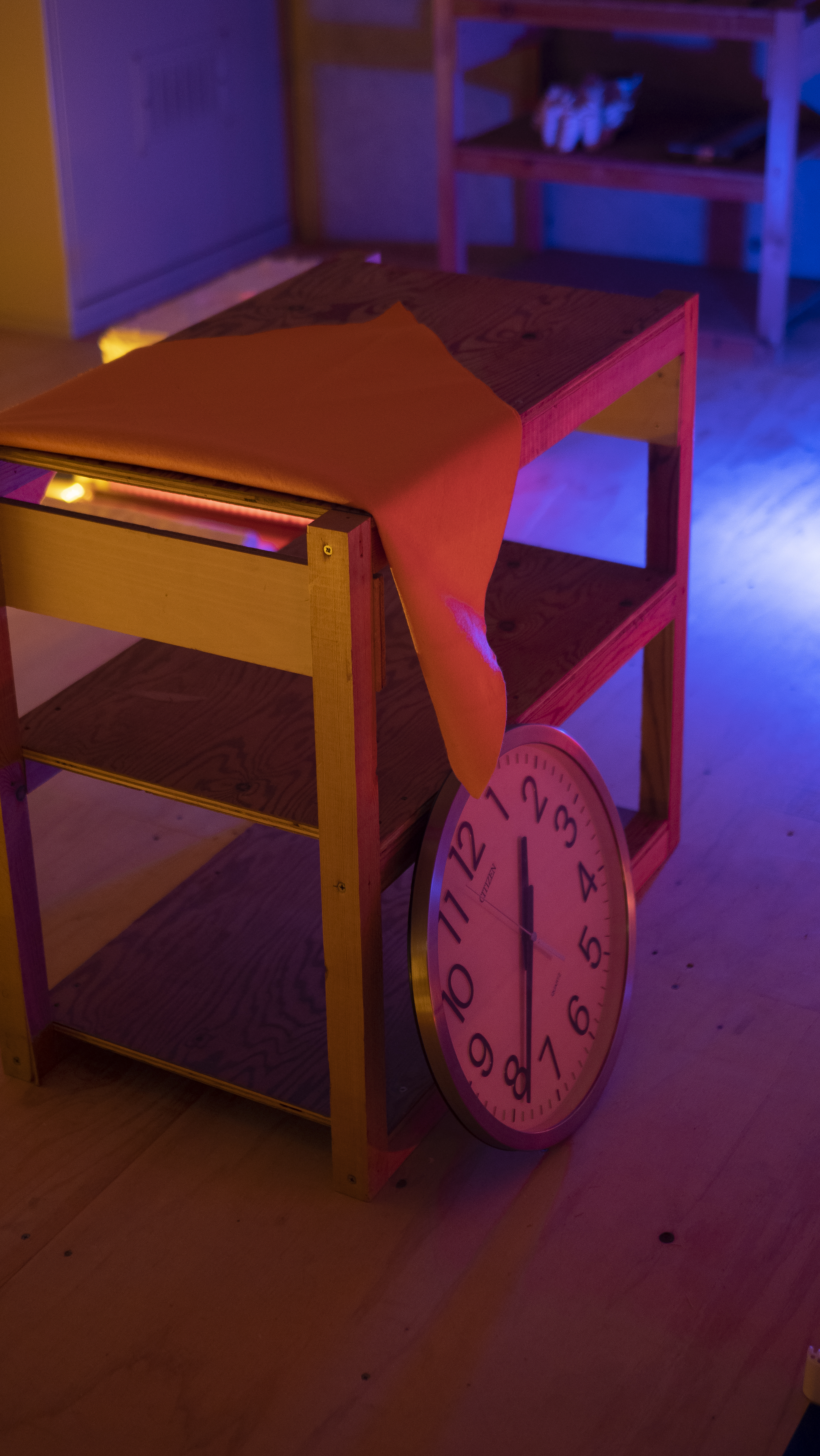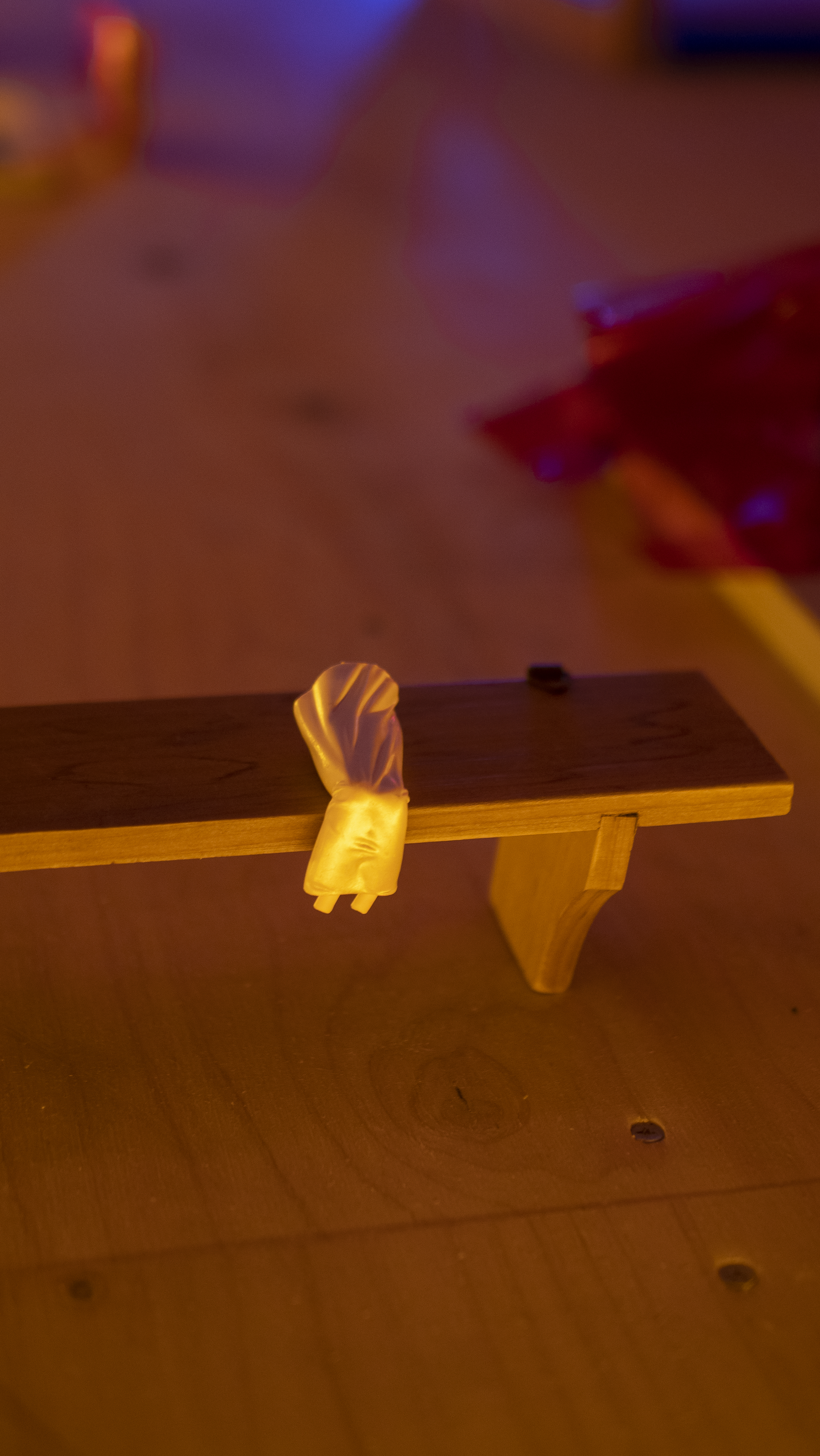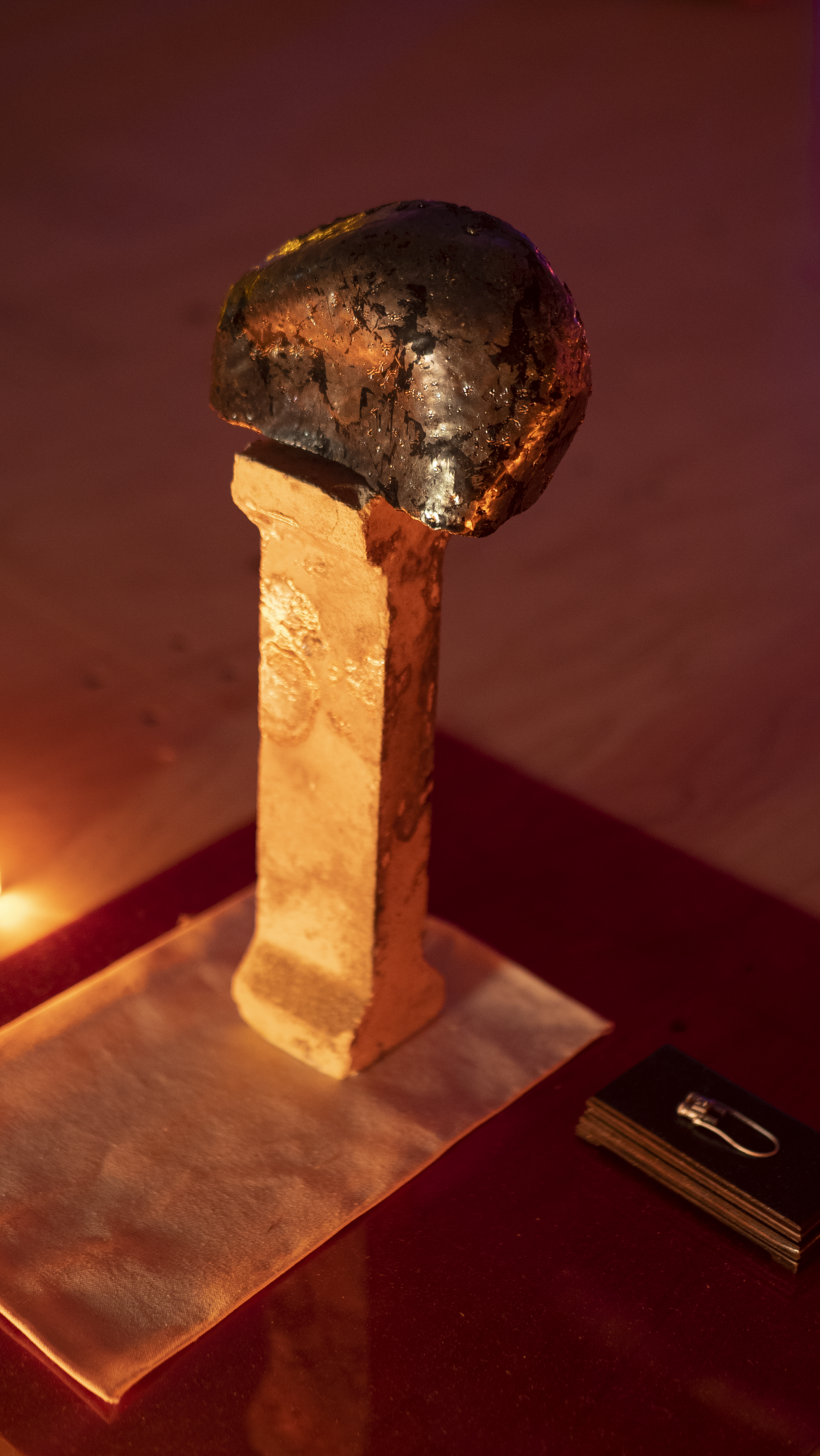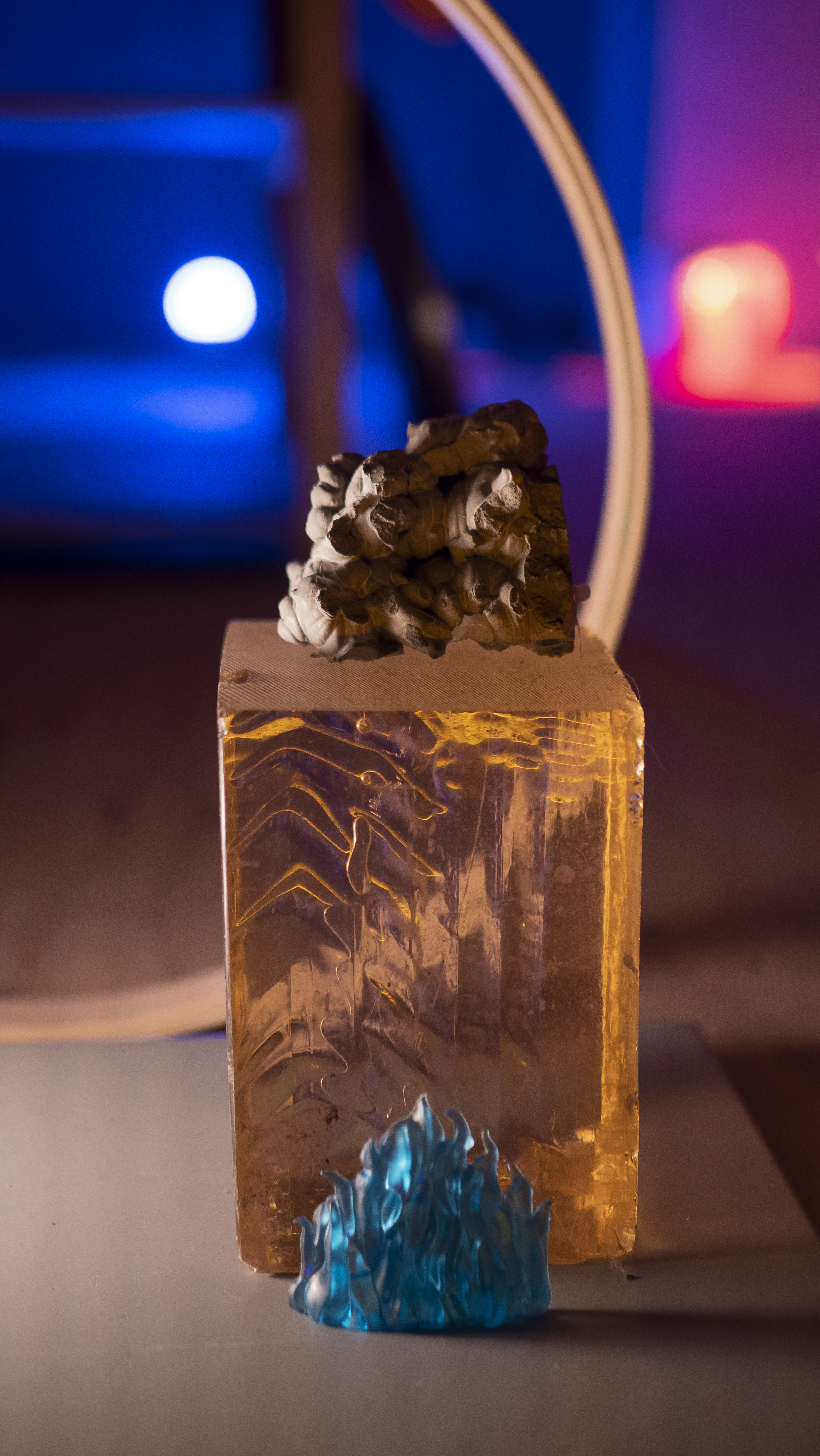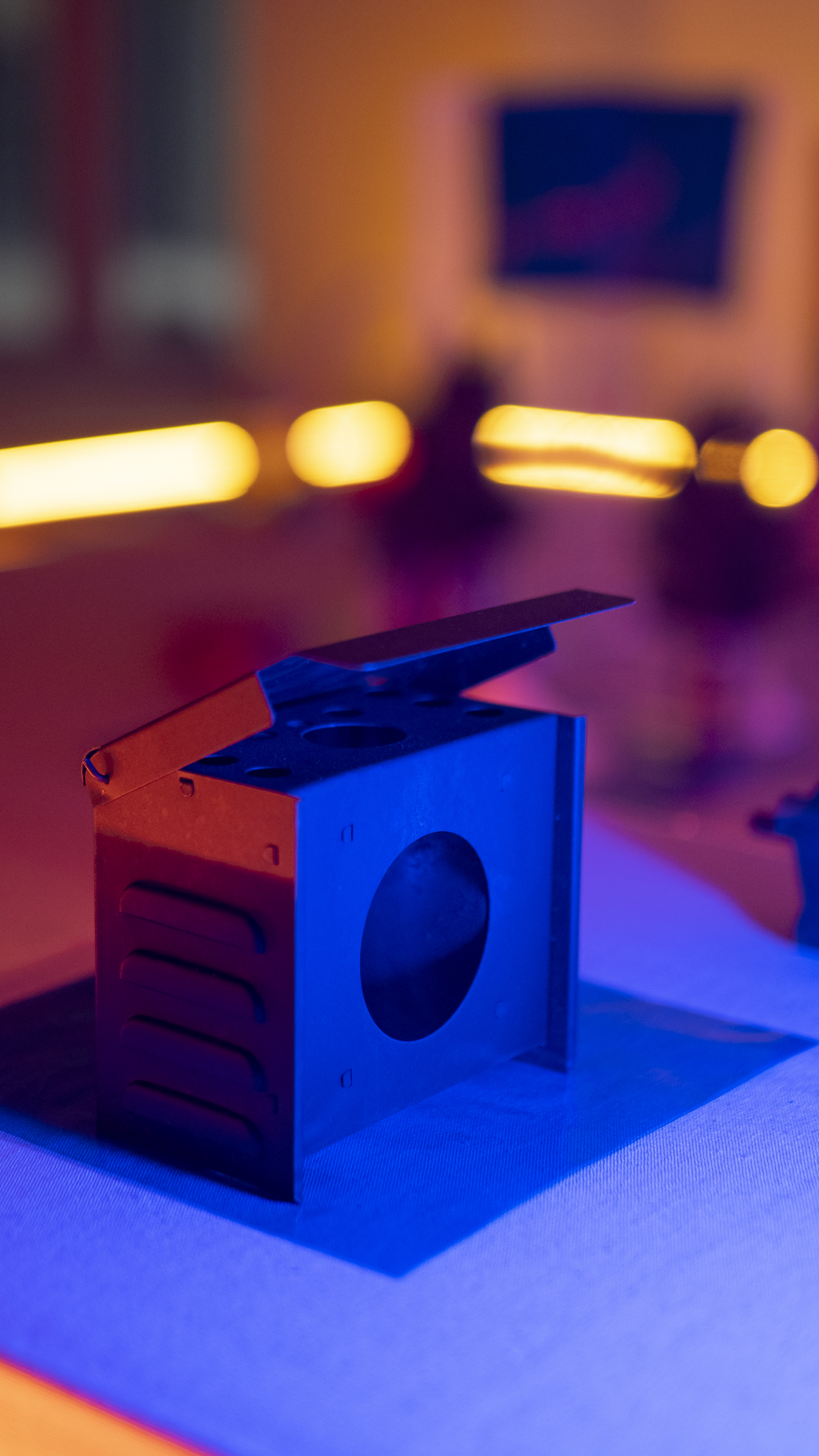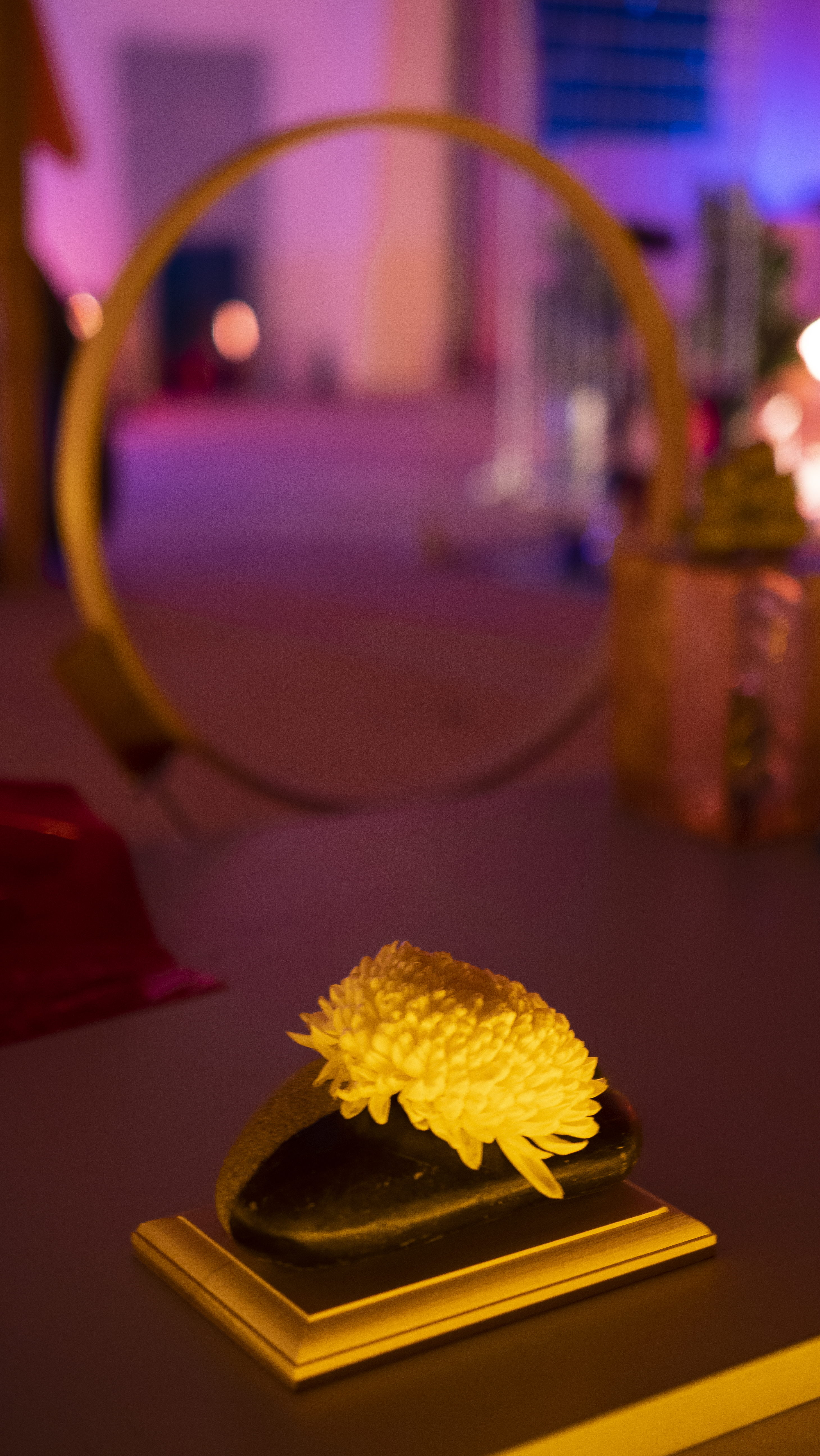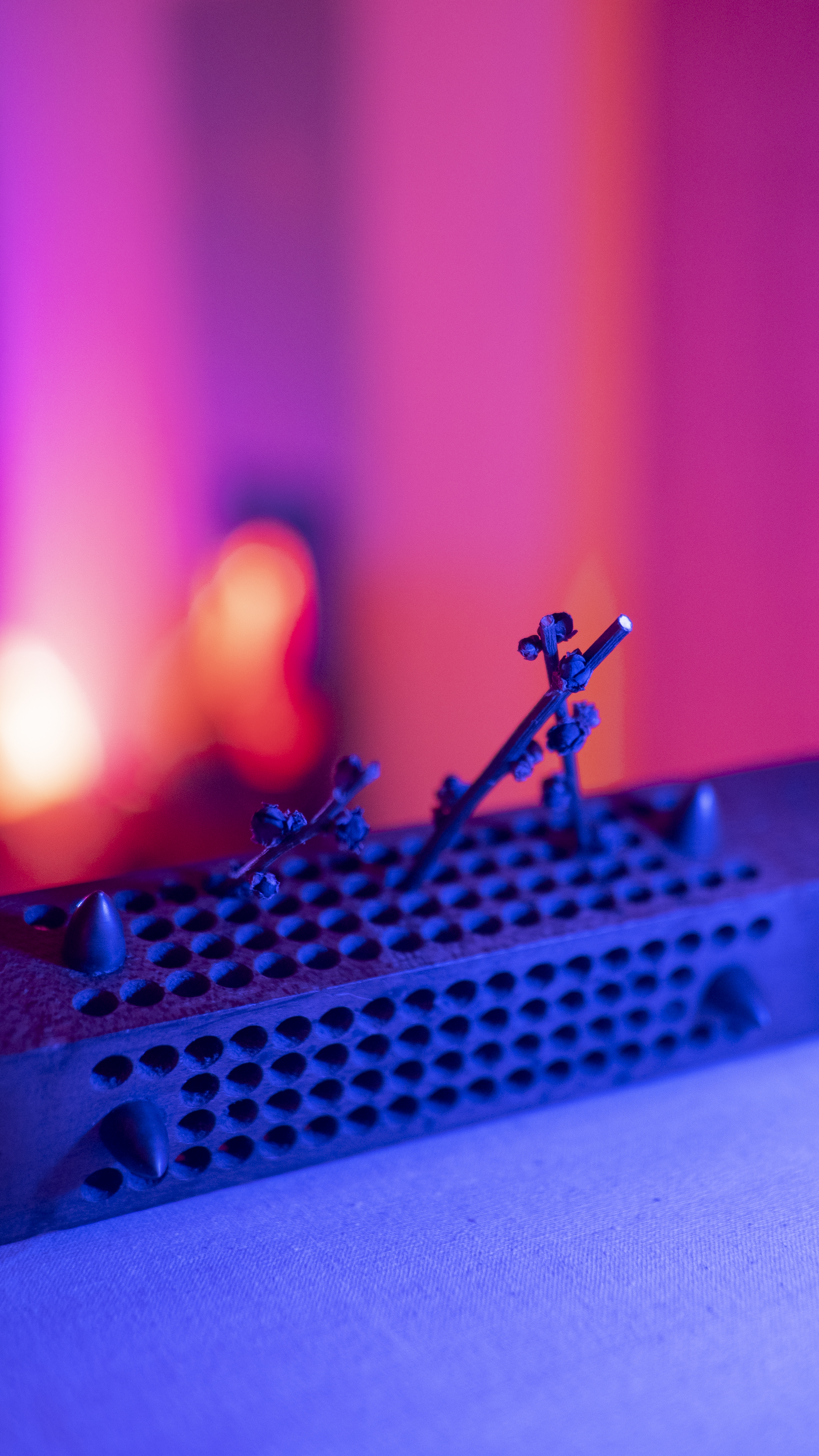Monomi II x FUKUSANBUTSUSANTEN
In cooperation with Thomas Vauthier
Kyoto City University of Arts
Performance: February 10, 2024
Concept, choreography, stage design, video: Fanny Terno and Thomas Vauthier
Objects: Fukusanbutsusanten
Music supervision: Drella
For the second chapter of Monomi II, we invited another artist duo whose approach resonates with our own: Fukusanbutsusanten. Their practice consists in collecting “by-products”—objects generated during the artistic process but excluded from the final work—and giving them a new life. By reinterpreting and reusing these objects, particularly those found on art school campuses in Kyoto, they introduce a sustainable perspective into the field of art.
This shift in perspective represents a crucial gesture in addressing ecological sustainability within the context of artistic creation. We sought to expand upon their approach by integrating it into the ritual process of Monomi, and to explore new ways of seeing these forsaken objects.
This collaboration took place as part of the first major exhibition on the new campus of Kyoto City University of Arts. In the brand-new buildings, the objects brought from the old campus by Fukusanbutsusanten created a powerful contrast. The former campus, located on the outskirts of Kyoto, had recently been moved to the city center, leading to a physical and symbolic relocation from a historically rooted site to a new one.
This process of movement became a central theme in Monomi II. In particular, the presence of the jichinsai (a traditional Shinto ritual to pacify the land before construction) carried important significance within the project. It became a way of exploring how the memory embedded in things and their relationships to place can be inherited and re-seen through new perspectives, in both physical and spiritual transitions.
日本語
物見 II × 副産物産店
京都市立芸術大学
パフォーマンス:2024年2月10日
コンセプト・振付・舞台美術・映像:テルノ・ファニーとトマ・ヴォーティエ
オブジェ:副産物産店
音楽監修:Drella
「物見」 II の第二章では、私たちがその芸術的アプローチに共感するもう一組のアーティストデュオ、副産物産店を招いた。副産物産店は、「副産物」 ― すなわち、制作の過程で生まれたが、最終作品としては扱われないモノ ― を拾い集め、それに新たな命を吹き込む活動を行っている。特に、京都の芸術大学のキャンパス内で収集したこれらのオブジェを再解釈し、再利用することで、アートの中に持続可能な視点 を取り入れている。この視点の転換は、アート制作の場におけるエコロジカルな持続可能性 に関わる重要なジェスチャーである。私たちは、彼らの試みをさらに発展させ、モノミの儀式的プロセスの中に取り込むことで、見捨てられたオブジェの新たな見方を探求する ことを試みた。このコラボレーションは、京都市立芸術大学の新キャンパスで開催された最初の大規模な展覧会 の一環として実現した。真新しい建物群 の中で、旧キャンパスから持ち込まれた副産物産店のオブジェ は、強いコントラストを生み出している。かつて京都郊外にあったキャンパスは、新しい都市中心部へと移転し、それに伴い、歴史的な場所から新たな場所へと移る過程が生じた。この移動の過程は、物見 II の中心的なテーマの一つとなった。特に、土地の鎮めの儀式地鎮祭の存在が、このプロジェクトにおいて重要な意味を持っている。かつての場所から新たな場所へ、物理的・精神的な移行を伴うこのプロセスの中で、モノが持つ記憶と、環境との関係性をどのように継承し、新たな視点をもって見ることができるのか を探る試みとなった
FR
Monomi II × Fukusanbutsusanten
Université municipale des arts de Kyoto
Performance : 10 février 2024
Concept, chorégraphie, scénographie, vidéo : Fanny Terno et Thomas Vauthier
Objets : Fukusanbutsusanten
Direction musicale : Drella
Pour le deuxième chapitre de Monomi II, nous avons invité un autre duo d’artistes dont l’approche artistique résonne avec la nôtre : Fukusanbutsusanten. Leur pratique consiste à collecter des « sous-produits » — c’est-à-dire des objets issus du processus de création mais exclus de l’œuvre finale — et à leur insuffler une nouvelle vie. En réinterprétant et réutilisant ces objets, notamment ceux récupérés sur les campus des écoles d’art de Kyoto, ils intègrent une perspective durable au sein de la création artistique.
Ce changement de regard constitue un geste important en faveur d’une durabilité écologique dans les lieux de production artistique. Nous avons cherché à prolonger cette démarche en l’intégrant au processus rituel de Monomi, afin d’explorer de nouvelles manières de voir les objets délaissés.
Cette collaboration s’est inscrite dans le cadre de la toute première grande exposition organisée sur le nouveau campus de l’Université municipale des arts de Kyoto. Dans ces bâtiments tout neufs, les objets apportés par Fukusanbutsusanten depuis l’ancien campus ont produit un contraste saisissant. Le campus, auparavant situé en périphérie de Kyoto, a été relocalisé au centre-ville, générant un processus de déplacement à la fois physique et symbolique — d’un lieu chargé d’histoire vers un espace nouveau.
Ce déplacement est devenu l’un des thèmes centraux de Monomi II. En particulier, la présence du jichinsai — rituel shinto de pacification du sol précédant toute construction — a pris une signification essentielle dans ce projet. Ce processus de transition physique et spirituelle est ainsi devenu une tentative d’interroger comment la mémoire portée par les objets et leur relation au lieu peuvent être transmises et re-regardées à travers une nouvelle perspective.
